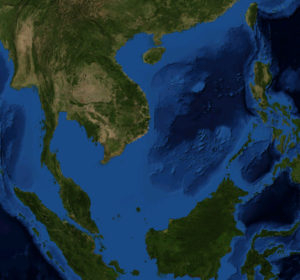
China’s Hainan Earth observation satellite constellation that is designed to “reinforce national sovereignty” over the South China Sea and other disputed territories is set to start launching its first satellites in 2019, according to Chinese state media reports.
The Hainan Earth observation satellite constellation, once all satellites have been launched, will comprise of ten high-resolution imaging satellites to include six electro-optical, two hyperspectral, and two synthetic aperture radar (SAR) observation space systems that will be able to provide continuous surveillance of the South China Sea at least several times a day.
The constellation will be controlled by an operations centre located on the Chinese island of Hainan, situated at the northern edge of the South China Sea. According to Yang Tianliang, director of the Sanya Institute of Remote Sensing in China, the Hainan constellation will increase Chinese government response times to incidences in the South China Sea, as well as render Chinese governance of the body of water more efficient. Further, Yang Tianliang claims that the Hainan constellation will also allow the Chinese government to identify and better exploit the natural resources of the South China Sea.
“Each reef and island as well as each vessel in the South China Sea will be under the watch of the ‘space eyes’,” Yang said. “The system will [reinforce] national sovereignty, protection of fisheries, and marine search and rescue.”
The entire constellation is expected to be built, launched, and in orbit by 2021. The first three electro-optical satellites are expected to be launched in the second half of 2019, and will include Automatic Identification System (AIS) capabilities to conduct maritime domain awareness (MDA) operations over the South China Sea.
In 2020 it is expected that the two hyperspectral imaging satellites will be launched, and they will be used to monitor oceanographic conditions. This will be followed by the launch of the two SAR imaging satellites that will be able to provide all-weather and night-time coverage of the South China Sea. The two SAR imaging satellites and the remaining three electro-optical satellites are expected to be launched in the third phase of the Hainan constellation deployment by 2021.
The announcement about the launch schedule of the Hainan constellation comes as Japan announced that it is considering building and launching its own Earth observation constellation of microsatellites for MDA operations over the South China Sea, East China Sea, and the Sea of Japan.
China’s territorial and sovereign claim to much of the South China Sea – as well as other territories – is vehemently disputed by its neighbours such as Vietnam, Brunei, Taiwan, the Philippines, and Malaysia and is opposed by countries such as the United States, India, Japan, and Australia.





